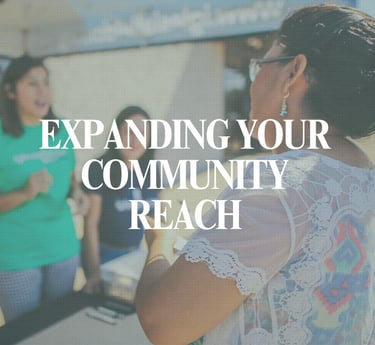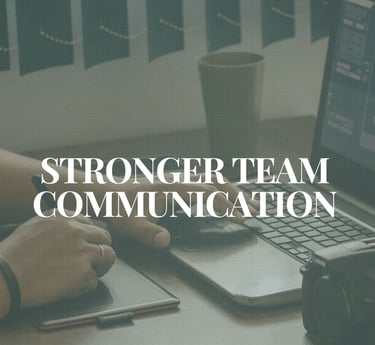Custom training for teams
Hello from our co-founders, Hannah Pitner, PhD, and Lindy Avila, ESL Specialist. Linguaviva began with a simple need we saw in our community: teams who required clear, practical English–Spanish communication to do their work safely, effectively, and compassionately. We started by designing highly specific workplace courses for local organizations — and that work grew into the custom training programs we offer today.
Today, we design programs that meet your scale: from one-day intensives to multi-month partnerships, from small groups to organization-wide learning.
We offer fully custom English and Spanish classes for businesses and nonprofits — delivered in person or online. Every program starts with a conversation. We learn about your team’s real tasks, communication challenges, safety needs, and the kind of workplace you’re trying to build. From there, we design a course that fits your goals: safer worksites, smoother operations, more inclusive spaces, stronger customer communication, or deeper team connection.
Your program is shaped through a full needs assessment and built around the details that matter: your schedule, your funding requirements (including grants), your team’s linguistic needs, and the format that works best for you — onsite classes, live online sessions, or on-demand professional development.
All of our learning is research-based and highly communicative. It’s not an app or a one-size-fits-all workbook. It’s a carefully designed experience created by experts — led by Dr. Hannah Pitner, a professor of Spanish and researcher in second language acquisition — and supported by a team with years of real-world teaching and curriculum design experience.
Our mission is simple: to bring high-quality, human-centered language learning to teams doing meaningful work in their communities — and to help them do that work even better, together.


A few reasons teams and organizations come to us for custom language training…
















We design programs that meet your scale: from one-day intensives to multi-month partnerships, from small groups to organization-wide learning.


“By coincidence, during the last week of class, a Honduran man who spoke no English came to our center seeking assistance. My colleague and I immediately grabbed our notes and sat down with him to learn more about his situation.
It wasn’t a perfect conversation, but we were able to gather the essential information we needed and refer him to the right service. Before the course, we all would have been panicking—but the class gave us the confidence to welcome our clients with kindness and handle the basics.
I would strongly recommend Hannah if you’re considering bringing Spanish classes to your workplace!”
— Serrie, Hospitality Hub
[ after a 6-week course ]

Most language courses rely on outdated methods — memorizing vocabulary lists, drilling grammar rules, and hoping learners will later figure out how to apply them.
Our approach is different. It’s grounded in Task-Based Language Teaching (TBLT), a method backed by decades of research in applied linguistics.
Instead of teaching isolated grammar concepts, we simulate real-life scenarios that reflect the actual work your team does. The result? Faster progress and more confident speakers who can communicate where it matters most.


This isn’t about doing everything in another language right away— just connecting, reassuring, and staying safe in the moments that count.

Our programs don’t replace the essential work of translators and interpreters — and they’re not designed to turn your team into full bilingual professionals overnight. Instead, we focus on the realistic, high-impact skills your staff can use right away: greeting clients, building rapport, signing someone in, answering simple questions, giving basic directions, supporting safety, and helping interactions feel human. These skills strengthen daily operations, reduce small miscommunications, and even make the work of professional interpreters smoother and more effective. It’s about the language that keeps your workplace moving — and the connection that makes your work meaningful.



I really enjoyed the varied yet consistent exercises that pushed me to respond to Spanish in a more natural way.
— Client, Restore Corps


A note on our methodology and online course options


"My teams key needs were building rapport in sensitive situations with Spanish speakers in potentially unsafe situations, talking with family members and explaining situations, and just generally being able to relate and be relatable. We have interpreters, but sometimes in the moment we just need to connect with another person or set them at ease"
-Nonprofit serving women impacted by sex trafficking
"My teams needs for the course were targeted language training for frontline communication especially for client communication, filling out intake forms, explaining services, and managing basic logistical or emotional interactions."
-Nonprofit serving people affected by homelessness
★★★★★
★★★★★
What to expect
🌿 Speaking Confidence
In nearly every survey we conduct, learners report that speaking is both their top goal and their biggest challenge. Our classes lower the affective filter by getting participants talking from Day 1 — in low-stress, real-world scenarios that build comfort and confidence. By Week 3, most learners are already engaging in basic conversational exchanges.
🌱 Team Building
While the focus is language learning, many groups say the biggest surprise benefit was the team bonding. One team kept a Spanish word wall in their supervisor’s office and added to it daily. Another made Spanish class part of the workday and noticed a boost in morale and collaboration as everyone worked toward a shared goal.
🌿Community Connection
Nearly 68 million people in the U.S.—almost 1 in 5—speak a language other than English at home, and Spanish is by far the most common, spoken in 62% of those households (U.S. Census Bureau, 2019). Yet many organizations still struggle to build authentic relationships with this key part of our community.
While translators are essential, true connection happens when two people can speak directly to one another. For your team, language can be the bridge.

"Our main need is for our safety supervisors to be able to walk the site, talk with crews, and make sure everyone is following the safety protocols. They need the language to give clear instructions, correct issues on the spot, and keep the job site running safely and smoothly."
-Flintco Construction
★★★★★

"Our main need is for our crew members to feel comfortable speaking in English — with homeowners and with me as their boss. We want them to be able to explain the schedule, answer basic questions about the work we’re doing, communicate politely if anything changes, and check in with me when they need support. Clear English communication keeps our customers confident in the work and helps our team stay organized and on the same page."
-Lawncare Company
★★★★★
Frequently Asked Questions
What makes Linguaviva different from other language training programs?
We use a research-backed, task-based approach (TBLT) that prioritizes real-world communication over memorizing grammar or vocabulary lists. Every session is built around practical tasks your team actually needs to do — like greeting clients, gathering information, or de-escalating situations.
Is the curriculum really customized?
Yes! Every course is fully tailored to your team’s specific needs. We design your curriculum based on a discovery call and a short team survey, using real examples of communication challenges from your workplace. All curriculum is developed by Dr. Hannah Pitner, an applied linguist and Spanish professor, ensuring it’s grounded in research and responsive to your context.
What if we’ve tried language learning before and it didn’t work — or we think we’re just not “language people”?
You’re not alone — that’s exactly why we built Linguaviva. Did you know that very little research supports the idea that some people have more aptitude than others? It really comes down to good strategy. We focus on real-world communication and help each learner find a strategy that works for their brain. There is no one-size-fits-all method, and you’re never “bad at languages.”
What languages do you teach?
We currently offer workplace Spanish and workplace English, depending on your team’s needs.
Who teaches the classes?
Our core instructors are co-founders Dr. Hannah Pitner and Lindy Avila. We occasionally partner with trusted, experienced language teachers — but all courses are custom-designed by Dr. Hannah to ensure every lesson is research-based and aligned with your team’s goals.
What kind of results can we expect?
You will be talking in the first class. People are very surprised by this. One group gave us a standing ovation after their first class (we all laughed), but it was really a celebration of themselves because they couldn't believe that they had just spend an hour of their first day speaking Spanish and actually accomplished a real life goal.
Most learners are having basic conversations by Week 3 — and, even more importantly, they feel comfortable doing so. Teams also report improved morale, stronger collaboration, and deeper connections with clients and community members.
Where are classes held?
Virtually or in-person. Everything is fully customized to you. We have held courses at a teams office during the work day, right after work, and online synchronously and asynchronously.
Do you offer makeup sessions?
Yes. If something comes up, we’ll work with your instructor to reschedule. Missed sessions without notice may not be eligible for makeup.
What’s your payment and cancellation policy?
Tuition is due one week before the first class.
If you’d prefer to split payment, you can pay 50% up front and 50% at the course midpoint.
Cancellations made 7+ days before the course start date are eligible for a partial refund.
No refunds are given after the course begins.

Our courses are fully custom. We design every program in partnership with your team — aligning with your goals, your workplace realities, and any grant or funding requirements you’re working within.
The first step is simple: reach out. We’ll talk through your training needs, learn about your learners and context, and then craft a tailored proposal that reflects the outcomes you’re aiming for.
Share your email or schedule a call below, and we’ll begin shaping the right learning experience together.
We're ready for more information

© 2025. All rights reserved.


